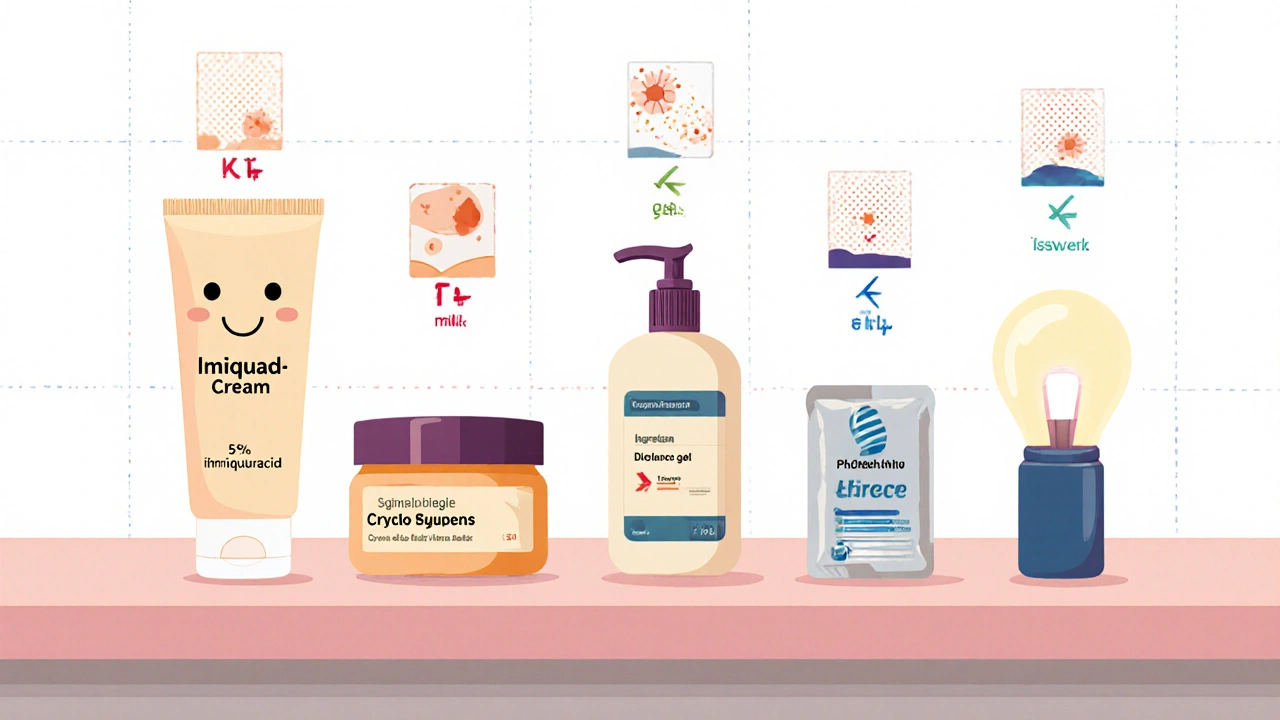When dealing with Topical Skin Cancer Creams, medicinal ointments applied directly to the skin to treat early‑stage cancers or precancerous lesions. Also known as skin cancer topicals, they target abnormal cells locally, often avoiding surgery.
One of the most common agents you’ll hear about is 5‑Fluorouracil, a chemotherapeutic cream that interferes with DNA synthesis in rapidly dividing cells. It’s usually prescribed for actinic keratosis and superficial basal cell carcinoma. The drug works by causing a build‑up of toxic metabolites inside the lesion, leading to cell death. Because it stays on the skin, topical skin cancer creams can shrink or eliminate the growth without cutting.
Another star player is Imiquimod, an immune‑modulating cream that boosts the body’s own defense against abnormal cells. It’s favored for superficial basal cell carcinoma and certain wart‑like lesions. Imiquimod triggers toll‑like receptors, prompting a local inflammatory response that clears the cancerous cells. Patients often notice redness and itching, which are signs the immune system is doing its job.
For those who need a milder option, Diclofenac Gel, a non‑steroidal anti‑inflammatory formulation approved for actinic keratosis, offers a low‑irritation alternative. It works by inhibiting cyclooxygenase enzymes, reducing prostaglandin‑driven cell proliferation. While it’s less aggressive than 5‑fluorouracil, it’s useful for patients with sensitive skin or multiple small lesions.
Topical skin cancer creams encompass agents like 5‑fluorouracil, imiquimod, and diclofenac gel, each tailored to a specific type of lesion. They require an accurate diagnosis of basal cell carcinoma, squamous cell carcinoma, or actinic keratosis to choose the right formula. Early detection of actinic keratosis enables the use of these creams to prevent progression into invasive cancer. Dermatologists often combine topical therapy with photodynamic therapy, which can boost the effectiveness of the creams.
Using these creams isn’t a DIY project—you need a dermatologist to confirm the lesion, prescribe the appropriate strength, and set a treatment timeline. Typical courses range from two weeks for imiquimod to several months for 5‑fluorouracil. Side effects like redness, crusting, or mild pain are normal and usually subside once therapy ends. Monitoring the area weekly helps catch any unexpected reactions early and lets the doctor adjust the plan if needed.
Below you’ll find a curated list of articles that dive deeper into each medication, compare their pros and cons, and share tips for managing side effects. Whether you’re looking for a quick overview or detailed guidance on a specific cream, the posts ahead give you the practical insights you need to make an informed decision.
Posted by
Jenny Garner
6 Comments

A comprehensive side‑by‑side look at Imiquad cream versus other topical treatments, covering how they work, side‑effects, costs and when each option is best.
read more